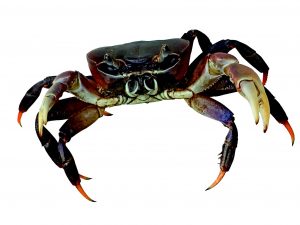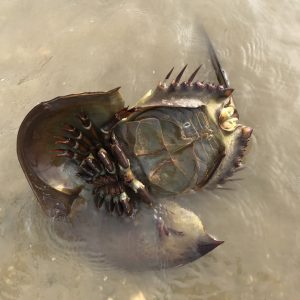Growing up and having spent most of my life here in Puerto Princesa City, I feel very sad every time I see the beaches I used to visit turned into private property, or crowded developments so chock-full of beach huts and people that you cannot see a decent spot of white space anymore.
A secret spot with a “coopantry”
I recently discovered a beach getaway that is just an hour’s drive from downtown. Unlike the popular beach destinations of the city like Sabang, Nagtabon, San Rafael, and Concepcion, where the beach is just adjacent to the National Highway, you will need to enter barely visible carabao trails in order to reach my secret spot. This beach is hidden from the main thoroughfare by thick jungle growth and mangrove clusters. Because of this, there is very little commercial or tourist activity along the beach and the people around me are mostly the second to fourth generation descendants of the original settlers.

Despite the number of fishing boats here and there, the area is still quite pristine. In fact, I have witnessed, quite a few times, local children pulling a drag net in waist deep waters to catch the day’s lunch and dinner, and I can see that they will not go hungry with their catch.
During some of my visits, Manong Wilson, a property caretaker, shows us the contents of his pantry, which is basically a small, fenced-off 1 square-meter area lined and covered with sack cloth to prevent the contents from running off. You read that right: I am seriously thinking of calling this a “coopantry,” since it is a pantry for his food stock, but it also works like a coop because most of the contents are live creatures. Among the regular food stocks, aside from fresh fish, are the kuday and alimango.
Small but delicious: the kuday
The kuday is a land crab that usually burrows in areas far from the reaches of the highest tide. They are like a smaller, rounder, and browner version of alimango, but their meat is dense and their upper carapace is usually full of fragrant dark roe. The roe is black, sometimes dark grey or dark brown, which makes first timers a little hesitant to consume it.
Due to the secluded nature of the area, there are kuday burrows right around Manong’s hut. They are harvested by digging into the ground, which is very tedious because the kuday burrow into hard ground and not on the sandy beach. A better option is to use bamboo traps; one sticks a section of bamboo into each kuday burrow. A simple mechanism will cause a bamboo stick to run through the lower portion of the bamboo tube to prevent the crab from getting out of the bamboo trap once it enters. I just hope Manong knows how to pace the harvest so that there will always be kuday to catch.
Kuday crabs are not very picky with their food. They come out at dusk to scavenge and they go back to the safety of their burrow before the break of dawn. We locals see them eat soft vegetation, small kuday creatures which cannot move out of the way (like mollusks), niyog, dead crabs or fish, etc. They move cautiously and sluggishly, although they can make a short dash for cover if necessary. For this reason, they are not known to run prey down like ghost crabs, which can chase injured crabs and hatchling sea turtles and pull these down into their burrows.
This timid nature, and the fact that they can’t shake off their instinct to keep eating, makes the kuday potential terrarium residents. I have seen one or two of my old acquaintances keeping kuday in a terrarium setting and feeding them kangkong. However, they must be solitary, or at least be given individual burrows to retreat to. Cannibalism is normal for crabs and the kuday appetite will make them eat each other even when already inside a bayong in your kitchen, ready for cooking.
The pesky alimango
I am not sure if the alimango I see around this area is of the same species as the mud crab or “King crab” that we usually see in the markets, because they sure do look similar. I spoke with some pond operators and they said that people in their trade are wary of the alimango, because they wreck fish ponds and dikes, and compete with the actual aquaculture crop for food.
To make matters worse, they reproduce like crazy, producing thousands of crablets that are too small to eat but compete for food and space. Their habitat is the wide mangrove swamp that surrounds the beach, and they also make themselves unwelcome guests in existing fishponds.
Mature crabs burrow into the mud up to about a meter deep. They can be caught during the night when they scavenge for food or–if you’re up for it—by directly sticking the entire length of your arm into the burrow and pulling them out. At least that is how the Manongs tell it. I haven’t really seen them do it.
Catching ghost crabs
When the preferred catch of kuday or alimango gets elusive, it’s time for the locals to gear up for the hundred-meter dash. They go chasing after tagoykoy, a crab belonging to a group of species called ghost crabs.
For the beach bums who have spent time walking along the beach at night, if you are not entirely bewitched by the romantic setting and have time to look around a bit, you may notice shadows of crabs dashing here and there. They are indeed very, very fast. During a daytime walk along the beach, you will notice many crab burrows all over the white sand from the water all the way up to where the sand meets the soil or vegetation. In fact, this is the one of the most common crabs that you see when you go to a local beach.
Tagoykoy is easier to catch than kuday or alimango because of their abundance and also because their burrows in the soft sand are much easier to dig up. If you don’t feel like digging, you can just chase them at night when they are out of their burrows, but they run really fast and are extremely agile. Unlike the kuday that become helpless when you grab them by the back (and if you know where to grab them), the tagoykoy can really put up a fight and their sharp claws can dig deep into your fingers.
About 20 years ago, when they were still found in great abundance, bigger specimens could easily be obtained. The carapace alone could be as big as a regular size computer mouse. It is during this time when people just caught them for fun and did not actually consider them as food due to their small size compared to the kuday and alimango.
Besides, I remember way back when you could see kudays crossing the street at night up to half a kilometer away from the beach. Who needs small crabs when you can pick bigger ones off the street? Back then, little boys caught tagoykoy so that these could be pitted against each other in a fight to the death. Being very aggressive and having sharp claws, two similar sized tagoykoys would be held by hand facing each other. They would nip at and decapitate each other quickly, usually by cutting off the opponent’s legs, pincers, and eyes until none is left. Today, a Tagoykoy with carapace the size of a golf ball is already considered big. Also, I have observed over a long period of time that my favorite beach and island destinations are no longer littered with crab burrows. Before, when we got bored, we just looked for a Tagoykoy burrow, dug it out, chased it, caught it, then let it go, just for the fun of it.
Now, I find it harder and harder to spot a decent sized burrow, let alone a big one (a tennis ball sized one is a good size). True enough, according to research centers in Southeast Asia and Brazil, the ghost crab population is a good indicator of human impact on a beach ecosystem. Although they are common and adaptable, the amount of trampling (walking and running in the beach), pollution, and vehicle activity in the sand can affect their numbers and general health. For this reason, the recent action of the DENR requiring establishments to back further away from the beach in Boracay and Palawan is a step in the right direction.
This appeared in Animal Scene magazine’s May 2018 issue.









